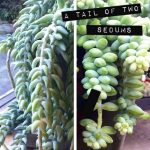As you all know, I am currently in Dallas, at the Garden Writers Association Symposium. But I didn’t want to leave you guys empty handed, so I put out a call for a guest poster to cover me while I’m gone. You guys are in for a treat, because a fantastic gardener and writer stepped up to the plate. Jodi Torpey lives in Denver, and below she shares some tips she has learned from growing her own fruits and vegetables in containers.
Ever since I watched my mother-in-law grow cherry tomatoes in a wooden nail keg, I knew there were few rules when it came to container gardening. That old keg was the perfect size for one plant and a cage to support it. It grew into one of the most beautiful and productive tomato plants I’ve seen.
Because container gardening is a smart alternative to conventional garden beds, there are more container-sized vegetables now than ever before. Instead of planting veggies with names like “Mammoth Red Rock” cabbage or “Giant Belgium” tomatoes, gardeners can plant “Little Finger” carrots, “Spacemaster” bush cucumbers or “Tiny Tim” tomatoes.
This summer I surprised myself at how well a crop of round baby carrots grew in a large container. It was so much easier to care for the carrots when they were close at hand, too.
Patio gardens can be grown with just 5 or 6 hours of sun a day. Look for the sunniest spot on the porch, deck or balcony and be sure to consider every possible space; herbs and leafy greens can be grown in hanging baskets and some vegetables do well in upside-down hanging planters.
Containers
If you’re growing your garden to save money on groceries, it doesn’t make sense to invest in expensive pottery containers. Be creative and look for frugal, functional options for planting.
For best results use 2-to-5 gallon containers with an opening 12 inches wide and match the size of the mature plant to the container. Be sure to punch or drill drainage holes in the container bottom and set on saucers or elevate on bricks to aid drainage.
Low cost container options, like plastic indoor house plant pots, can be scored at garage sales and thrift stores. Home improvement stores sell 5-gallon buckets for less than $3 and large plastic storage tubs, available at discount and dollar stores, are another inexpensive planting option.
There are also free containers available for the super-frugal gardener willing to ask for the plastic food-grade buckets discarded by bake shops, donut shops, fast-food restaurants and the bakery department at grocery stores. New life can also be given to black plastic nursery containers and some great deals can be found by the curb on trash day.
Other planting options include wooden barrels, window boxes, ceramic flower pots, wash tubs, even bushel baskets. Clay pots are my least favorite for planting because the soil in these dries out so much faster than in plastic containers. If planting in a terra cotta pot, try to provide some shade or plant in a plastic container hidden inside.
If you don’t like the look of mismatched containers, a can of spray paint is a quick solution for matching colors to your outdoor décor.
Plants
Just about any fruiting or rooting vegetable can be part of a container garden including snap beans, beets, broccoli, Brussels sprouts, eggplant, baby greens, Chinese cabbage, lettuce, spinach, peppers, onions, garlic and squash.
Many culinary herbs, like basil, parsley, rosemary, chives, oregano, tarragon, sage and summer savory all do well in patio pots. In fact, finding favorites to grow in containers is probably the easiest part.
Care
Use a slow release or organic fertilizer at planting time. Water frequently to keep plants from drying out and add a diluted fertilizer every few weeks throughout the growing season. Grouping the containers close together will help prevent evaporation and also give the area the look of a real garden.


